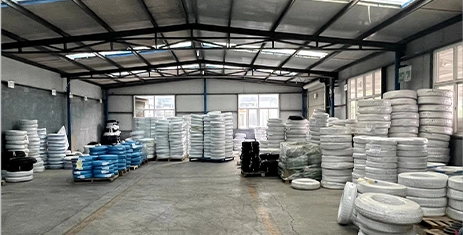power steering compression hose
Understanding Power Steering Compression Hoses
Power steering systems have become an essential feature in modern vehicles, enhancing maneuverability and providing a more comfortable driving experience. One of the critical components of this system is the power steering compression hose. Understanding what these hoses are, their function, and maintenance can help vehicle owners ensure smooth steering performance.
What is a Power Steering Compression Hose?
A power steering compression hose is a high-pressure rubber or synthetic hose designed to transport hydraulic fluid from the power steering pump to the steering gear or rack. The hose must be able to endure the pressure generated by the pump, which can vary with driving conditions and steering demands. Additionally, these hoses are often subjected to extreme temperatures and environmental factors, making their construction resilient against wear and tear.
Role in the Power Steering System
The primary function of the power steering compression hose is to facilitate the flow of hydraulic fluid. When the driver turns the steering wheel, the power steering pump generates pressure, causing hydraulic fluid to flow through the hose. This fluid assists in moving the steering gear, making it easier for the driver to turn the wheel. Without a properly functioning compression hose, the power steering system may not work effectively, leading to increased steering effort and potential vehicle control issues.
Signs of a Failing Compression Hose
Knowing the warning signs of a failing power steering compression hose can help drivers address issues before they escalate
. Common indicators include1. Leaking Fluid One of the most noticeable signs of a hose issue is power steering fluid leaking under the vehicle. This fluid is typically reddish or clear, and puddles on the ground can indicate a compromised hose.
power steering compression hose

2. Whining Noise A high-pitched whining sound when turning the steering wheel may suggest that the power steering system is low on fluid due to a leak in the compression hose.
3. Stiff Steering Wheel If the steering becomes noticeably harder to turn, it may be due to insufficient hydraulic pressure caused by a damaged hose.
4. Air in the System If air enters the system through a faulty hose, it can lead to poor steering response and increased wear on the pump.
Maintenance and Replacement
Regular inspection of the power steering system, including the compression hose, is crucial for maintaining optimal vehicle performance. Drivers should check for signs of wear, such as cracks, bulges, and stiffness in the hose. If a leak is detected, it's essential to replace the hose promptly to prevent further damage to the power steering pump and other components.
Replacement hoses should match the exact specifications recommended by the vehicle manufacturer, as differences in size or material could lead to performance issues. Professional assistance is often recommended for this task, ensuring that the power steering system is correctly bled and free of air after replacement.
Conclusion
Power steering compression hoses play a vital role in ensuring smooth and effective steering control. By understanding their function and recognizing signs of wear and tear, drivers can take proactive steps to maintain their vehicles, ensuring a safe and enjoyable driving experience. Regular maintenance and timely replacement of these hoses are key to keeping the power steering system in top shape.
-
Ultimate Spiral Protection for Hoses & CablesNewsJun.26,2025
-
The Ultimate Quick-Connect Solutions for Every NeedNewsJun.26,2025
-
SAE J1401 Brake Hose: Reliable Choice for Safe BrakingNewsJun.26,2025
-
Reliable J2064 A/C Hoses for Real-World Cooling NeedsNewsJun.26,2025
-
Heavy-Duty Sewer Jetting Hoses Built to LastNewsJun.26,2025
-
Fix Power Steering Tube Leaks Fast – Durable & Affordable SolutionNewsJun.26,2025

